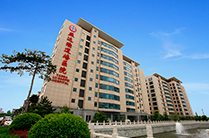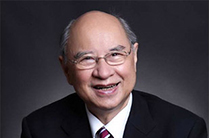Blood and Bone Marrow Transplantation Types
Our hospital medical staff provide not only skilled clinical services during transplants, but also offer education and support to patients.
There are several types of blood and bone marrow transplants. The source of the hematopoietic (blood forming) cells further defines the type of transplant. The hematopoietic cells used for transplantation can be collected from the blood or the bone marrow. Hematopoietic cells, sometimes referred to as blood stem cells, are immature cells capable of dividing and developing into any type of mature blood cells.
Blood and bone marrow transplant
Autologous transplant
With an autologous transplant, the conditioning regimen is given to treat your disease, but requires an infusion of your own hematopoietic (blood forming) cells to restore your body's ability to make blood cells. Your hematopoietic cells are collected and frozen before you receive the high dose therapy. Your hematopoietic cells will be given back to you as an infusion following the high dose therapy. Like syngeneic transplants, there is no risk of rejection or graft-versus-host disease (GVHD) and graft verse leukemia (GVL) effect is absent.
Allogeneic transplant
An allogeneic donor is one other than the patient. An allogeneic transplant combines the concept of anti-cancer therapy with immunotherapy. The conditioning regimen is given to treat your disease, followed by an infusion of hematopoietic (blood forming) cells from your donor's blood or bone marrow. The donor cells provide you with new blood cells and a new immune system.
Allogeneic transplants have the lowest risk of tumor relapse because of the GVL effect. However, GVHD (where the new transplanted immune system sees the patient as foreign), graft failure, and immune deficiency are potential problems.
Allogeneic donors are chosen based on a blood test for human leukocyte antigens (HLA). HLA are genetic markers of the immune system that allow each individual’s immune cells to differentiate between itself and the cells of other people or foreign organisms. The donor cells are obtained from an HLA matched (related or unrelated) or mismatched (related, at least 50% matched) individual. If the donor is a relative, the transplant is called a related donor blood and bone marrow transplant. If the donor is an unrelated individual, the transplant is called an unrelated donor (URD) blood and bone marrow transplant.
The intensity of the conditioning regimen—the therapy administered before you receive the donor's cells—can vary. The conditioning regimen ranges in intensity from high dose preparative regimens to reduced intensity preparative regimens.
• HLA matched unrelated transplant
• Haploidentical transplant
Many patients in need of a transplant will not have a matched family member or unrelated donor. Studies have shown that half-identical, or haploidentical, related donors can be performed with similar outcomes to that seen with matched transplants. All parents and children, and about half of siblings, are halfmatches. The ability to perform haploidentical transplants has revolutionized bone marrow transplant, so that almost everyone now needing a transplant can get one.
• Cord blood transplant
Syngeneic transplant
The donor is an identical twin of the patient. This is the simplest source of stem cells. Syngeneic transplants are the least complicated transplants because there is no risk of rejection, graft-versus-host disease (GVHD), or tumor in the marrow. Blood cell recovery and return of immune system functioning is prompt. The only disadvantage of syngeneic transplants is the lack of the graft versus leukemia (GVL) effect of allogeneic transplants that helps reduce tumor relapse.














 京公网安备13108202000843号
京公网安备13108202000843号